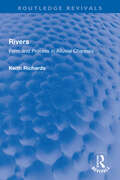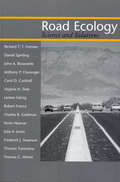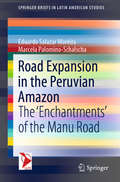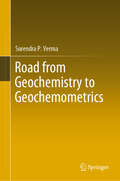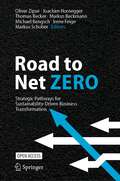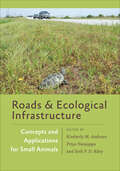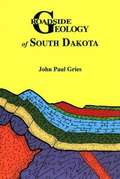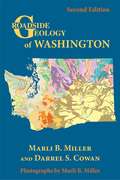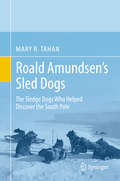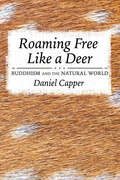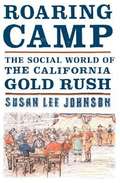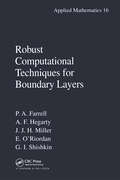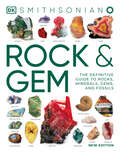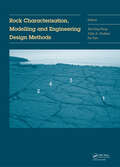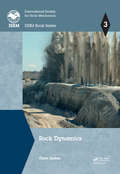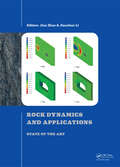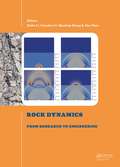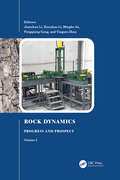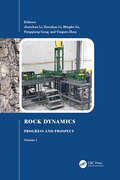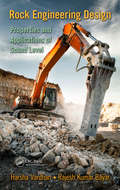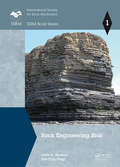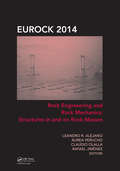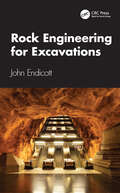- Table View
- List View
Rivers: Form and Process in Alluvial Channels (Routledge Revivals)
by Keith RichardsOriginally published in 1982, this book presents a detailed review of alluvial river form and process and integrates the distinct but related approaches of geomorphologists, geologists and engineers to the subject. It outlines the environmental catchment factors that control the development of channel equilibrium and provides a detailed account of the sediment transport processes that represent the physical mechanisms by which channel adjustment occurs. Where possible it evaluates theoretical analyses in the context of the empirical evidence. Rivers should prove a valuable textbook for geomorphology students on advanced undergraduate courses on river behaviour and will also be of interest to students of hydraulics and sedimentology and to those concerned with civil and environmental engineering, river management and channel design, maintenance and management in the water industry
Road Ecology: Science and Solutions
by Virginia H. Dale Daniel Sperling Anthony P. Clevenger Richard T.T. Forman Carol D. Cutshall John A. BissonetteA central goal of transportation is the delivery of safe and efficient services with minimal environmental impact. In practice, though, human mobility has flourished while nature has suffered. Awareness of the environmental impacts of roads is increasing, yet information remains scarce for those interested in studying, understanding, or minimizing the ecological effects of roads and vehicles. Road Ecology addresses that shortcoming by elevating previously localized and fragmented knowledge into a broad and inclusive framework for understanding and developing solutions. The book brings together fourteen leading ecologists and transportation experts to articulate state-of-the-science road ecology principles, and presents specific examples that demonstrate the application of those principles. Diverse theories, concepts, and models in the new field of road ecology are integrated to establish a coherent framework for transportation policy, planning, and projects. Topics examined include: *foundations of road ecology *roads, vehicles, and transportation planning *vegetation and roadsides *wildlife populations and mitigation *water, sediment, and chemical flows *aquatic ecosystems *wind, noise, and atmospheric effects *road networks and landscape fragmentationRoad Ecology links ecological theories and concepts with transportation planning, engineering, and travel behavior. With more than 100 illustrations and examples from around the world, it is an indispensable and pioneering work for anyone involved with transportation, including practitioners and planners in state and province transportation departments, federal agencies, and nongovernmental organizations. The book also opens up an important new research frontier for ecologists.
Road Expansion in the Peruvian Amazon: The 'Enchantments' of the Manu Road (SpringerBriefs in Latin American Studies)
by Marcela Palomino-Schalscha Eduardo Salazar MoreiraThis book provides in-depth insights into the construction of the first road to reach riparian communities and the main access point to a national park in the Amazonian rain forest. It is based on an ethnographic investigation in Peru’s Manu Province in the Amazon, which explored diverse local attitudes towards the construction of a road in the overlapping buffer zone of two protected areas: the Manu National Park and the Amarakaeri Communal Reserve. The book reveals the applicability of Harvey and Knox’s concept of ‘enchantments of infrastructure’ in the case of first roads, but also makes accessible wider debates in political ecology such as territoriality and frontier development. The promise of first roads sparks feelings of aspiration and anticipation of the advent of development through speedy travel, economic connectivity and political integration. Yet these developments seldom take shape as expected. The author explores the perspectives, social dynamics and political maneuvers that influence first road building processes in the Amazon, which have applicability to experiences and strategies of road development elsewhere.
Road from Geochemistry to Geochemometrics
by Surendra P. VermaThis book highlights major problems in the statistical analysis of compositions that have been known for over a century, as well as the corresponding solutions that have been put forward by specialists over the past 30 years. The basic assumptions of normality or multi-normality are pointed out and methods to test and achieve them are also covered. The conventional major and trace element geochemistry and modeling equations are discussed, and are followed by a more sophisticated multidimensional approach to data handling. The book’s main focus is on the use of statistical techniques to facilitate data interpretation. It also highlights the classification (or nomenclature) and tectonic discrimination aspects for both igneous and sedimentary rocks. The book concludes by discussing computer programs that are helping pave the way from geochemistry to geochemometrics. Written by a leading expert in the area of geochemistry, it offers a valuable guide for students and professionals in the area.
Road to Net Zero: Strategic Pathways for Sustainability-Driven Business Transformation
by Thomas Becker Irene Feige Joachim Hornegger Markus Beckmann Oliver Zipse Michael Bengsch Markus SchoberWith this open access book, delve into the insights of respected leaders from academia and industry as they unravel the intricacies of sustainability-driven business transformation. This meticulously curated edited volume reflects on The Road To Net Zero, underscoring the need for pioneering pathways. Embark on a collaborative learning journey and explore key issues along the road to transformation, such as crafting corporate sustainability strategies, new forms of corporate disclosure, transforming value chains, and harnessing the power of technological innovation. Packed with guiding questions and distilled findings from research, this book is a must-read for all decision-makers, strategists, engaged citizens, educators, and learners committed to driving change and shaping a more sustainable future.
Roads and Ecological Infrastructure: Concepts and Applications for Small Animals (Wildlife Management and Conservation)
by Kimberly M. Andrews, Priya Nanjappa and Seth P. D. RileyA practical guide that explains how we can design roads that are compatible with populations of small wildlife.Few of us think twice about driving on roads. Yet the very presence of roads and the act of driving on them can impact the ecological infrastructure that supports an animal's daily life. What chance does a turtle have of successfully laying its eggs when it needs to traverse a busy highway? Is it realistic to expect small mammals to breed when an interstate thoroughfare subdivides their population? These are the sorts of challenges faced by small, often slow-moving, animals, challenges that road engineers and ecologists are trying to address.For countless small species, vehicles traveling at high speeds are nothing less than missiles shooting across migration pathways. For too many animals, the danger can lead to the loss of populations, in part because they simply are not programmed to react to traffic. Salamanders faced with a two-lane road between the forest and their aquatic breeding site, for example, will typically cross that road regardless of the congestion. The result can be hundreds of flattened animals in a single night.Roads and Ecological Infrastructure is the first book to focus on reducing conflict between roads and small animals. Highlighting habitat connections and the challenges and solutions from both transportation and ecological perspectives, the volume covers various themes, including animal behavior related to roads and design approaches to mitigate the negative effects of roads on wildlife. The chapter authors—from transportation experts to university researchers—each promote a goal of realistic problem solving. Conceptual and practical, this book will influence the next decade or more of road design in ecologically sensitive areas and should prevent countless unnecessary wildlife fatalities.Published in association with The Wildlife Society.
Roadside Geology of South Dakota
by John P. Gries James GriesemerA layperson's geological road map describing rocks and landforms along South Dakota's highways, as well as the geology lying beneath in caves and mine shafts. Gries (geology, South Dakota School of Mines) keeps it simple but informative, traveling from the glaciated prairies, across the Missouri River, and into the rugged Badlands Wall, the Needles, and the Homestake gold mine in the the West. Stops along the way include geologic tours of the Black Hills, Mount Rushmore, Wind Cave National Park, and Jewel Cave National Monument. Includes maps and photographs. Annotation c. by Book News, Inc., Portland, Or.
Roadside Geology of Washington (2nd Edition)
by Marli B. Miller Darrel S. CowanWashington is alive with geologic activity: It’s home to the most active volcanoes in the lower 48, earthquakes regularly rattle the populated Puget Sound region, the potential of landslides increases with each soaking rain, and tsunami evacuation routes alert tourists in Olympic National Park to the active plate boundary just off the coast. With the help of this completely updated second edition, you can appreciate spectacular geologic features along more than forty of Washington’s highways.
Roald Amundsen’s Sled Dogs: The Sledge Dogs Who Helped Discover the South Pole
by Mary R. TahanThis book is an analytical account of how Roald Amundsen used sledge dogs to discover the South Pole in 1911, and is the first to name and identify all 116 Polar dogs who were part of the Norwegian Antarctic Expedition of 1910–1912. The book traces the dogs from their origins in Greenland to Antarctica and beyond, and presents the author’s findings regarding which of the dogs actually reached the South Pole, and which ones returned.Using crewmember diaries, reports, and written correspondence, the book explores the strategy, methodology, and personal insights of the explorer and his crew in employing canines to achieve their goal, as well as documents the controversy and internal dynamics involved in this historic discovery. It breaks ground in presenting the entire story of how the South Pole was truly discovered using animals, and how deep and profound the differences of perception were regarding the use of canines for exploration.This historic tale sheds light on Antarctic exploration history and the human-nature relationship. It gives recognition to the significant role that animals played in this important part of history.
Roaming Free Like a Deer: Buddhism and the Natural World
by Daniel CapperBy exploring lived ecological experiences across seven Buddhist worlds from ancient India to the contemporary West, Roaming Free Like a Deer provides a comprehensive, critical, and innovative examination of the theories, practices, and real-world results of Buddhist environmental ethics. Daniel Capper clarifies crucial contours of Buddhist vegetarianism or meat eating, nature mysticism, and cultural speculations about spirituality in nonhuman animals. Buddhist environmental ethics often are touted as useful weapons in the fight against climate change. However, two formidable but often overlooked problems with this perspective exist. First, much of the literature on Buddhist environmental ethics uncritically embraces Buddhist ideals without examining the real-world impacts of those ideals, thereby sometimes ignoring difficulties in terms of practical applications. Moreover, for some understandable but still troublesome reasons, Buddhists from different schools follow their own environmental ideals without conversing with other Buddhists, thereby minimizing the abilities of Buddhists to act in concert on issues such as climate change that demand coordinated large-scale human responses. With its accessible style and personhood ethics orientation, Roaming Free Like a Deer should appeal to anyone who is concerned with how human beings interact with the nonhuman environment.
Roaring Camp: The Social World of the California Gold Rush
by Susan E. JohnsonIn this thoroughly researched volume, drawing upon a wealth of primary sources, Johnson examines the world of the California Gold Rush with emphasis on race, ethnicity, and gender issues. She contrasts the conventional images of Gold Rush participants - Anglo males from the eastern U.S. heading west to sek their fortunes - with the reality. In fact, the Gold Rush brought together people from highly diverse backgrounds and forced them to interact with one another. Native Americans, Latinos from several nations, Anglos from the eastern U.S., European immigrants, and African Americans (both free and enslaved) all played key roles. Women of all backgrounds were also present in small but significant numbers, finding opportunities to work and live with unprecedented independence. Initially Gold Rush society was outside the bounds of accepted U.S. mores, forcing participants to relate to one another in new ways. As more Anglo women moved to California to join male relatives, middle-class standards were brought to bear on the "lawless" Gold Rush country.
Robert Ballard: Deepwater Explorer
by Jeffrey B. Fuerst Racheal RiceHow can you get eyes on the ocean floor at depths that would crush a human? Robert Ballard discovered how: using remotely operated vehicles equipped with cameras. Ballard combed the ocean floor looking for the Titanic, which tragically sank in 1912 on its very first voyage. His quest to find the grandest ship ever built led to technology that gave us the chance to discover more about Earth's oceans than ever before.
Robust Computational Techniques for Boundary Layers
by Grigory I. Shishkin Paul Farrell Alan Hegarty John M. Miller Eugene O'RiordanCurrent standard numerical methods are of little use in solving mathematical problems involving boundary layers. In Robust Computational Techniques for Boundary Layers, the authors construct numerical methods for solving problems involving differential equations that have non-smooth solutions with singularities related to boundary layers. They pres
Rock & Gem
by DKYour compact guide to more than 450 rocks, crystals, gemstones, and fossilsExplore the treasures of the Earth—sparkling crystals, vibrant gemstones, and age-old fossils—with this illustrated guide that's sure to captivate every rockhound and budding gemmologist.From primeval origins to their astonishing modern-day uses and appeal, this is the ultimate portrait of Earth's geological riches. Also included is a focused look at other precious materials often prized for their beauty, such as amber, coral, ivory, and fossils.Learn how to identify more than 450 rock and gem specimens through stunning photographs and detailed characteristics. Discover more about rocks and gems through folklore and historical artifacts and find out the fascinating stories behind some of the amazing natural treasures, including the Hope Diamond and the Great Mogul emerald. It also contains information on polishing and displaying your finds to further equip you with all the knowledge needed to delve into the arena of rock and mineral collecting.Rocks & Gems was produced in association with the Smithsonian in Washington, D.C., the world's largest museum complex, ensuring the guide's accuracy.
Rock Characterisation, Modelling and Engineering Design Methods
by John A. Hudson Xia-Ting Feng Fei TanRock Characterisation, Modelling and Engineering Design Methods contains the contributions presented at the 3rd ISRM SINOROCK Symposium (Shanghai, China, 18�20 June 2013). The papers contribute to the further development of the overall rock engineering design process through the sequential linkage of the three themes of rock characterisation, model
Rock Dynamics (ISRM Book Series)
by Omer AydanRock dynamics has become one of the most important topics in the field of rock mechanics and rock engineering. The spectrum of rock dynamics is very wide and it includes the failure of rocks, rock masses and rock engineering structures such as rockbursting, spalling, popping, collapse, toppling, sliding, blasting, non-destructive testing, geophysical explorations, science and engineering of rocks and impacts. The book specifically covers fundamentals of rock dynamics, constitutive models, numerical analysis techniques, dynamic testing procedures, the multi-parameter responses and motions of rocks during fracturing or slippage in laboratory experiments, earthquakes and their strong motion characteristics and their effect on various rock structures such as foundations, underground structures, slopes, dynamic simulation of loading and excavation, blasting and its positive utilization in rock engineering, the phenomenon of rockburst in rock excavations, non-destructive testing of rockbolts and rock anchors and impacts by meteors or projectiles. The main goal of this book is to present a unified and complete treatise on Rock Dynamics and to represent a milestone in advancing the knowledge in this field and in leading to new techniques for experiments, analytical and numerical modelling as well as monitoring of dynamics of rocks and rock engineering structures.
Rock Dynamics and Applications - State of the Art
by Jian Zhao Jianchun LiRock dynamics studies the response of rock materials and rock masses under dynamic loading conditions. In the last a couple of decades, the development of experimental and computational techniques has been able to capture the progress of fracturing in microsecond steps, allowing the exploration on how the fracture is initiated, propagated and branc
Rock Dynamics: Proceedings of the 2nd International Conference on Rock Dynamics and Applications
by Jian Zhao Haibo Li Jianchun Li Qianbing ZhangRock Dynamics: From Research to Engineering is a collection of the scientic and technical papers presented at the Second International Conference on Rock Dynamics and Applications (RocDyn-2, Suzhou, China, 18-19 May 2016). The book has four sections. The first section contains 8 keynote papers, covering a wide range of dynamic issues related to roc
Rock Dynamics: Proceedings of the Fourth International Conference on Rock Dynamics And Applications (RocDyn-4, 17–19 August 2022, Xuzhou, China)
by Jianchun LiRock Dynamics: Progress and Prospect contains 153 scientific and technical papers presented at the Fourth International Conference on Rock Dynamics and Applications (RocDyn-4, Xuzhou, China, 17-19 August 2022). The two-volume set has 7 sections. Volume 1 includes the first four sections with 6 keynotes and 5 young scholar plenary session papers, and contributions on analysis and theoretical development, and experimental testing and techniques. Volume 2 contains the remaining three sections with 74 papers on numerical modelling and methods, seismic and earthquake engineering, and rock excavation and engineering. Rock Dynamics: Progress and Prospect will serve as a reference on developments in rock dynamics scientific research and on rock dynamics engineering applications. The previous volumes in this series (RocDyn-1, RocDyn-2, and RocDyn-3) are also available via CRC Press.
Rock Dynamics: Proceedings of the Fourth International Conference on Rock Dynamics And Applications (RocDyn-4, 17–19 August 2022, Xuzhou, China)
by Jianchun LiRock Dynamics: Progress and Prospect contains 153 scientific and technical papers presented at the Fourth International Conference on Rock Dynamics and Applications (RocDyn-4, Xuzhou, China, 17-19 August 2022). The two-volume set has 7 sections. Volume 1 includes the first four sections with 6 keynotes and 5 young scholar plenary session papers, and contributions on analysis and theoretical development, and experimental testing and techniques. Volume 2 contains the remaining three sections with 74 papers on numerical modelling and methods, seismic and earthquake engineering, and rock excavation and engineering. Rock Dynamics: Progress and Prospect will serve as a reference on developments in rock dynamics scientific research and on rock dynamics engineering applications. The previous volumes in this series (RocDyn-1, RocDyn-2, and RocDyn-3) are also available via CRC Press.
Rock Engineering Design
by John A. Hudson Xia-Ting FengGiven the recent advances in site investigation techniques, computing, access to information and monitoring, plus the current emphasis on safety, accountability and sustainability, this book introduces an up-to-date methodology for the design of all types of rock engineering projects, whether surface or underground. Guidance is provided on the natu
Rock Engineering Design: Properties and Applications of Sound Level
by Harsha Vardhan Rajesh Kumar BayarPhysico-mechanical rock properties are significant in all operational mining activities. This book evaluates rock properties by using empirical equations and soft computing techniques. It predicts various physico-mechanical properties such as uniaxial compressive strength (UCS), Schmidt rebound number (SRN), dry density, P-wave velocity (Vp), tensile strength (TS), Young's modulus (E), and percentage porosity (n) using multiple regression and artificial neural network (MLP and RBF) techniques, taking drill bit speed, penetration rate, drill bit diameter, and equivalent sound level produced during drilling as input parameters.
Rock Engineering Risk (ISRM Book Series)
by Xia-Ting Feng John A. HudsonThis book provides a new, necessary and valuable approach to the consideration of risk in underground engineering projects constructed within rock masses. There are Chapters on uncertainty and risk, rock engineering systems, rock fractures and rock stress, the design of a repository for radioactive waste, plus two major case examples relating to th
Rock Engineering and Rock Mechanics: Structures in and on Rock Masses
by Áurea Perucho Rafael Jiménez Claudio Olalla Leandro R. AlejanoRock Engineering and Rock Mechanics: Structures in and on Rock Masses covers the most important topics and state-of-the-art in the area of rock mechanics, with an emphasis on structures in and on rock masses. The 255 contributions (including 6 keynote lectures) from the 2014 ISRM European Rock Mechanics Symposium (EUROCK 2014, Vigo, Spain, 27-29 Ma
Rock Engineering for Excavations
by John EndicottThis book provides an introduction to the whole engineering process of designing and constructing deep excavations in rock, including caverns, tunnels, shafts, and pits.The process is comprehensively covered from initial site planning, through design considerations such as the assessment of rock mass properties, the closure of contracts and resolution of disputes, and lastly onto the maintenance and final decommissioning or repurposing of underground facilities. The subject material is derived from the author’s extensive practice, with reference to successful projects and cases where things went wrong.Written accessibly and starting from the basics, Rock Engineering for Excavations serves as a comprehensive and practical guide for undergraduate and master’s students, as well as non-specialist project managers.
